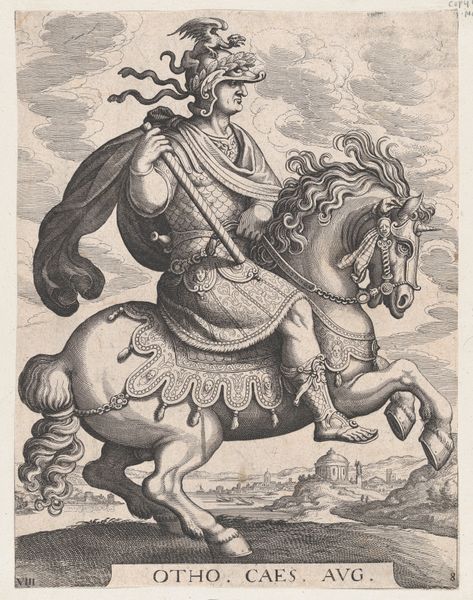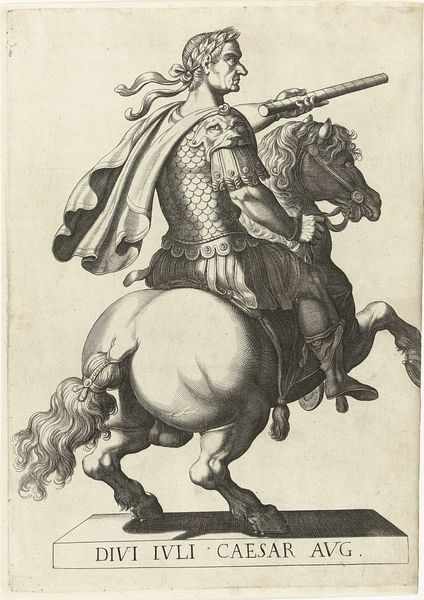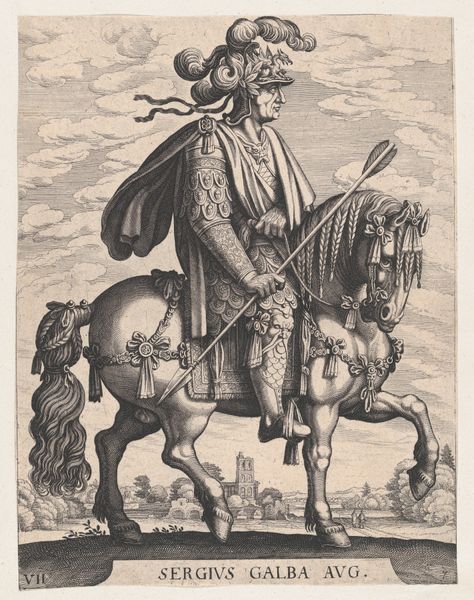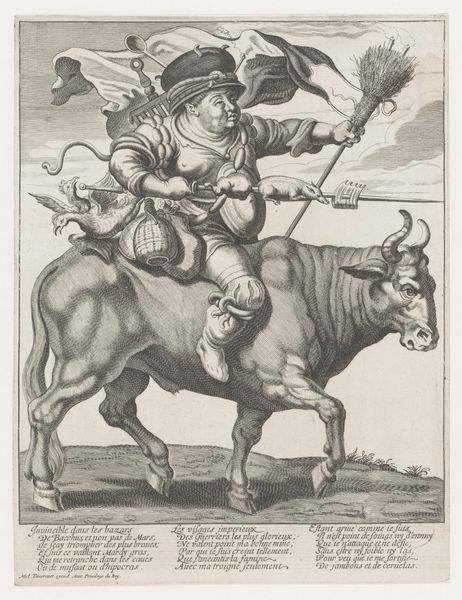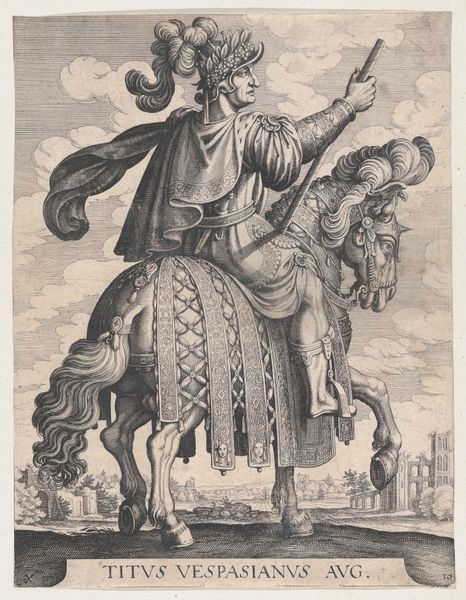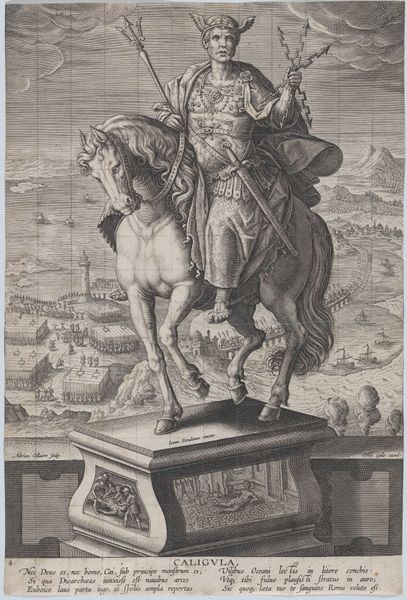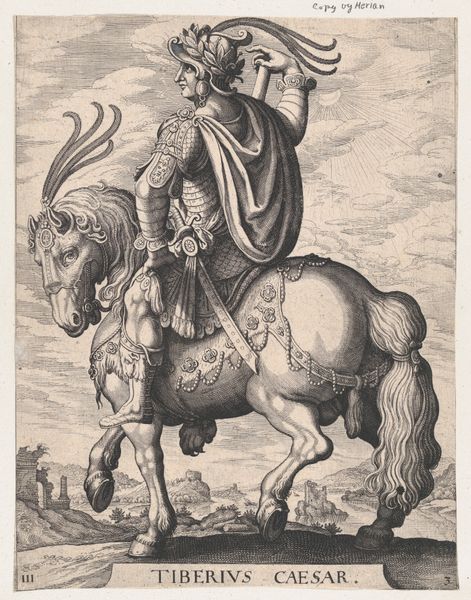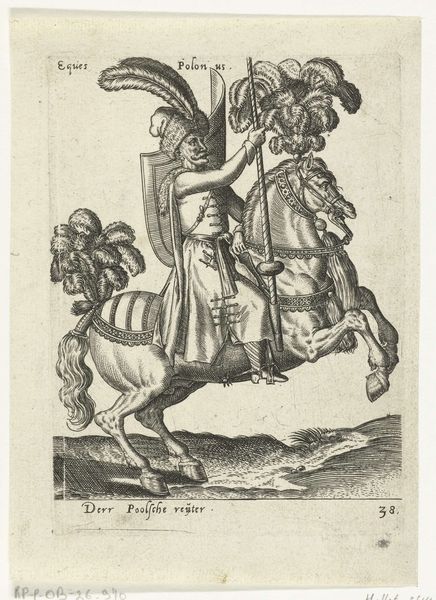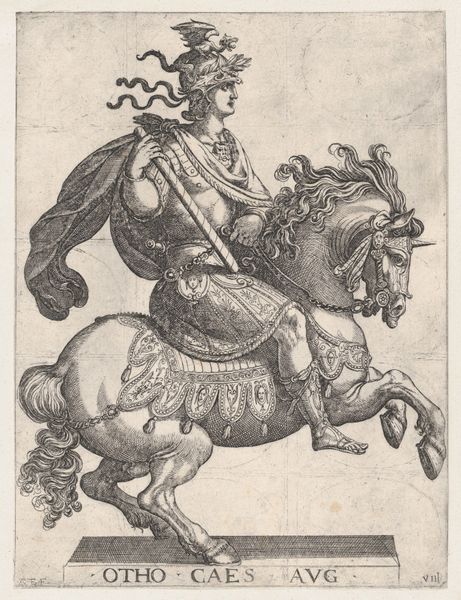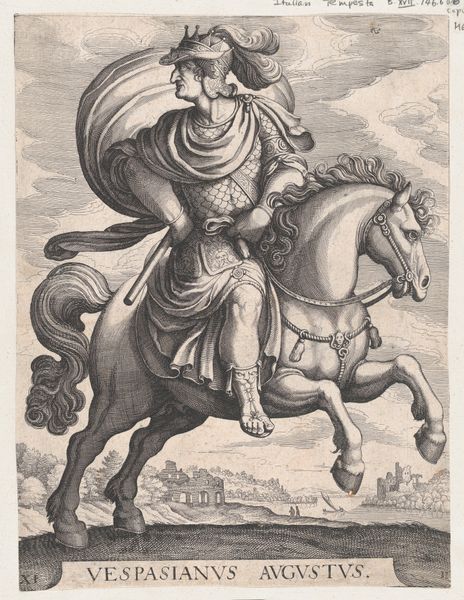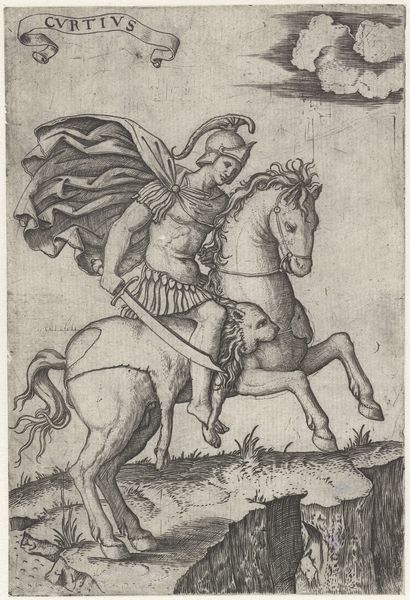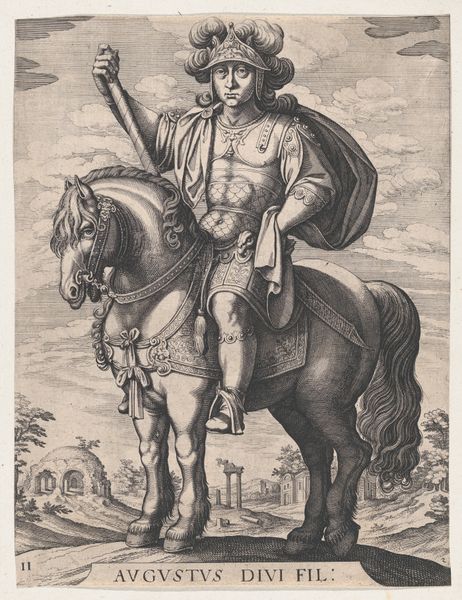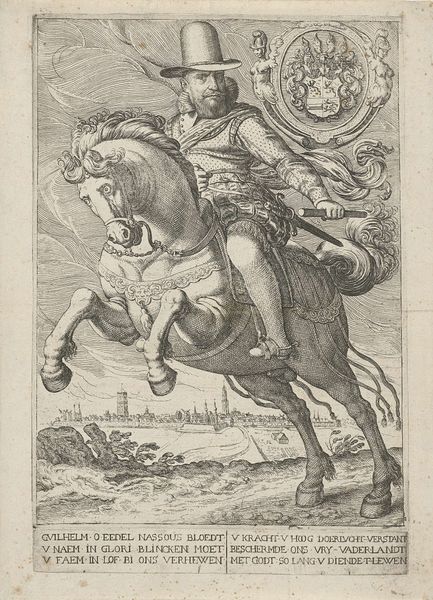
Plate 1: Emperor Julius Caesar on Horseback, from ' The First Twelve Roman Caesars', after Tempesta 1610 - 1650
0:00
0:00
drawing, print, engraving
#
portrait
#
drawing
#
baroque
# print
#
landscape
#
figuration
#
11_renaissance
#
horse
#
line
#
history-painting
#
engraving
Dimensions: Sheet: 11 13/16 × 8 7/8 in. (30 × 22.5 cm)
Copyright: Public Domain
Curator: This is "Plate 1: Emperor Julius Caesar on Horseback, from 'The First Twelve Roman Caesars', after Tempesta," an engraving created sometime between 1610 and 1650. The artist is Matthäus Merian the Elder. Editor: The first thing I notice is the commanding presence of Caesar. There's an almost overwhelming weight to his figure and his steed, as if they’re about to break through the picture plane. Curator: It’s interesting that you use the word "weight," as engravings, unlike paintings, often grapple with translating mass into line. This print belongs to a series depicting the first twelve Roman emperors, and the engravings, widely distributed, shaped popular understanding of these historical figures. Note the armor details and how Caesar holds what seems to be a baton, symbols of authority and power. Editor: Absolutely. The baton is fascinating; it looks almost like a rolled document, signifying not just authority but perhaps also the written law and decrees that defined Caesar’s reign. The landscape in the background, while secondary, adds to this sense of historical depth, suggesting the world over which Caesar exerted his influence. But I also notice a subtle anxiety—his steely gaze and the tense posture seem more guarded than triumphant. Curator: That tension, I think, is what gives the piece its lasting appeal. It encapsulates the political realities of the time and perhaps also mirrors anxieties about leadership and legacy in the early modern era. This print, distributed in numerous books, cemented an image of Caesar as a figure perpetually vigilant, if not embattled, which resonated within European political contexts grappling with centralization of power. Editor: It speaks to the timelessness of symbols, doesn't it? We recognize the symbols of Roman power instantly, even centuries later. And it highlights how powerful these images were in crafting, even controlling, narratives about historical figures, using very subtle but intentional imagery. Curator: Indeed. Merian, through Tempesta’s designs, participated in a visual conversation that continues even now. These images reinforce ideals about leadership and legacy, playing an integral role in constructing history for the masses. Editor: Looking at it, I’m struck by how images continue to influence us. We imbue these historical figures with the meanings we want them to carry. Curator: A valuable consideration indeed! I am left musing on the role prints such as this played in standardizing European imagery of Roman emperors.
Comments
No comments
Be the first to comment and join the conversation on the ultimate creative platform.
